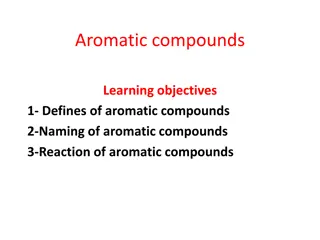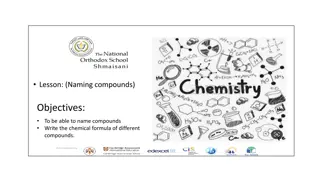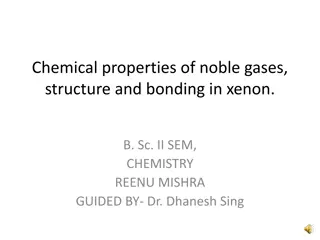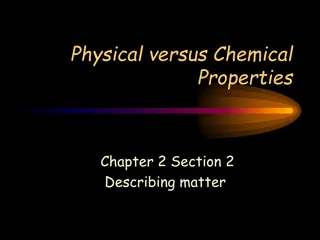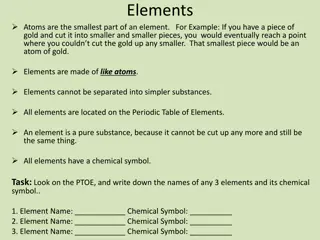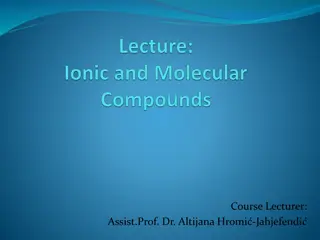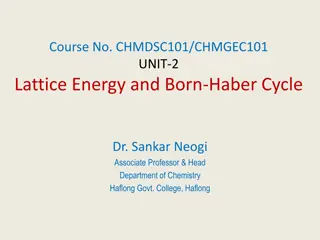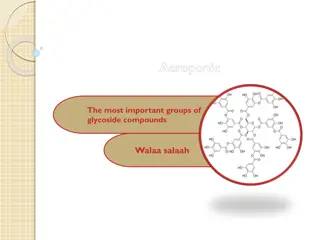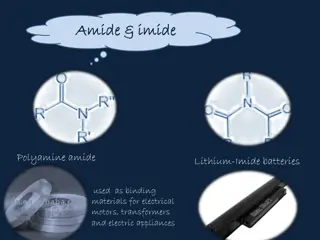Chemical Properties of Common Compounds
Explore the properties of essential chemical compounds such as Calcium Chloride, Sodium Hydroxide, Ammonium Chloride, and Potassium Nitrate, including their uses, solubility, and reactions in water. Learn about their physical characteristics and applications in various industries.
Download Presentation

Please find below an Image/Link to download the presentation.
The content on the website is provided AS IS for your information and personal use only. It may not be sold, licensed, or shared on other websites without obtaining consent from the author.If you encounter any issues during the download, it is possible that the publisher has removed the file from their server.
You are allowed to download the files provided on this website for personal or commercial use, subject to the condition that they are used lawfully. All files are the property of their respective owners.
The content on the website is provided AS IS for your information and personal use only. It may not be sold, licensed, or shared on other websites without obtaining consent from the author.
E N D
Presentation Transcript
Chemistry Made by: Yara Naffa, Yasmeen Ejjeh and Lana Alshafei
Calcium Chloride (CaCl2) Properties Calcium Chloride is a white crystalline solid at room temperature (it is highly soluble in water.) Calcium Chloride is an inorganic compound (a salt with the chemical formula CaCl 2) It is a salt that is solid at room temperature (it behaves as a typical ionic halide) Calcium Chloride is used for the treatment of hypocalcemia and hyperkalemia, and as an antidote to magnesium intoxication due to overdosage of magnesium sulfate.
Sodium Hydroxide (NaOH) Properties sodium hydroxide is a colorless crystalline solid that melts at 318 C (without decomposition and with a boiling point of 1,388 C) It is highly soluble in water, with a lower solubility in polar solvents such as ethanol and methanol. Sodium hydroxide is used to produce soaps, rayon, paper, products that explode, dyes, and petroleum products.
Ammonium Chloride (NH4Cl) properties Ammonium chloride is a colourless crystalline substance. Ammonium Chloride is highly soluble in water (readily forming a slightly acidic solution) It vaporizes without melting at 340 C (to form equal volumes of ammonia and hydrogen chloride) Ammonium Chloride helps maintain pH and exerts a mild diuretic effect. This acid forming salt also exerts an expectorant effect by irritating the mucous membranes and is used for alleviation of cough.
Potassium Nitrate (KNO3) Properties Potassium Nitrate is a white to dirty gray crystalline solid. Water soluble. Noncombustible (but accelerates the burning of combustible material) Potassium nitrate is an inorganic salt with a chemical formula of KNO3. It is a natural source of nitrate Potassium Nitrate is used to make explosives, matches, fertilizer, fireworks, glass and rocket fuel.
Calcium Chloride (CaCl2) -Exothermic- Sodium Hydroxide (NaOH) -Exothermic- Ammonium Chloride (NH4Cl ) -Endothermic- Potassium Nitrate (KNO3) -Endothermic- When dissolved in water, solid calcium chloride releases heat in an exothermic reaction and it dissociates into its ions When dissolved in water, sodium hydroxide produces negative hydroxide ions and positive sodium ions (Na+). When dissolved in water, ammonium chloride hydrolyses to form ammonium hydroxide and hydrochloric acid. When solid potassium nitrate is dissolved in water, the potassium ion is attracted by a partially negative oxygen atom, while the nitrate ion is attracted by a partially positive hydrogen atom of the water molecules, resulting in the formation of potassium hydroxide.
Initial Temperature and Final Temperature Substance Initial Temp. Final Temp. Calcium Chloride 24 72 Sodium Hydroxide 25 30 Ammonium Chloride 25 86 Potassium Nitrate 23 15


